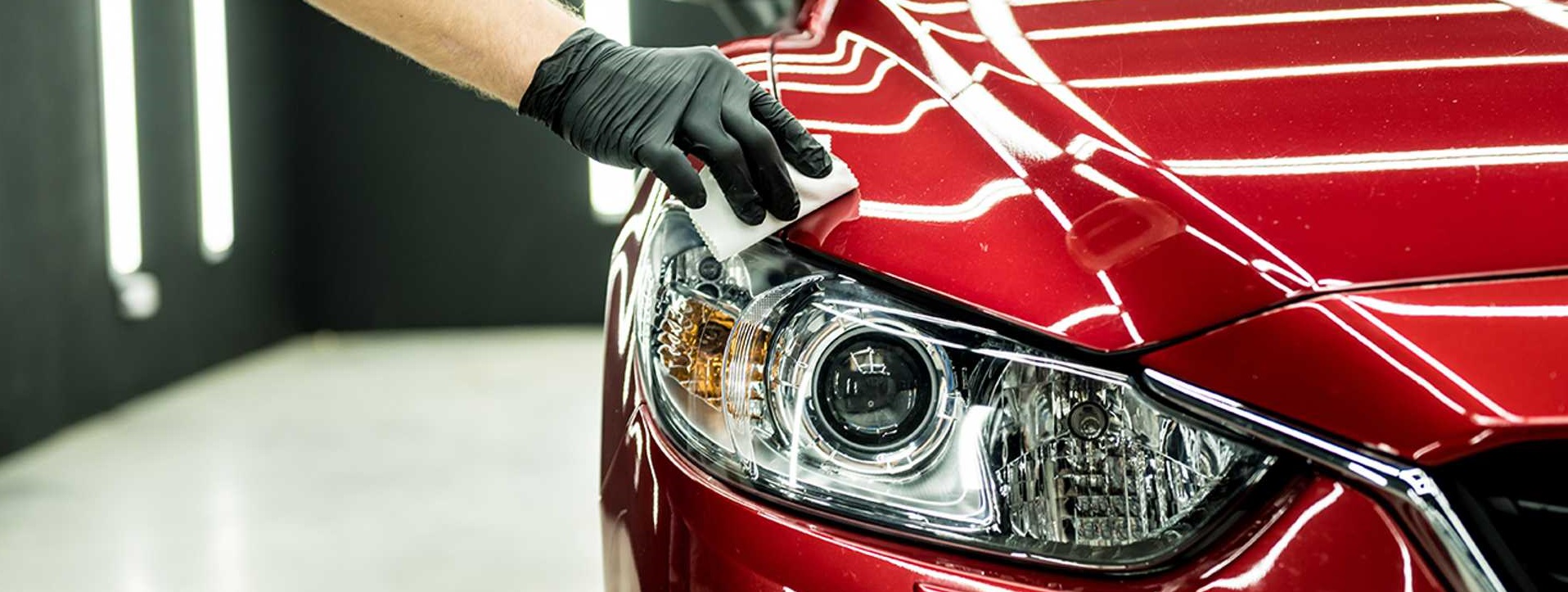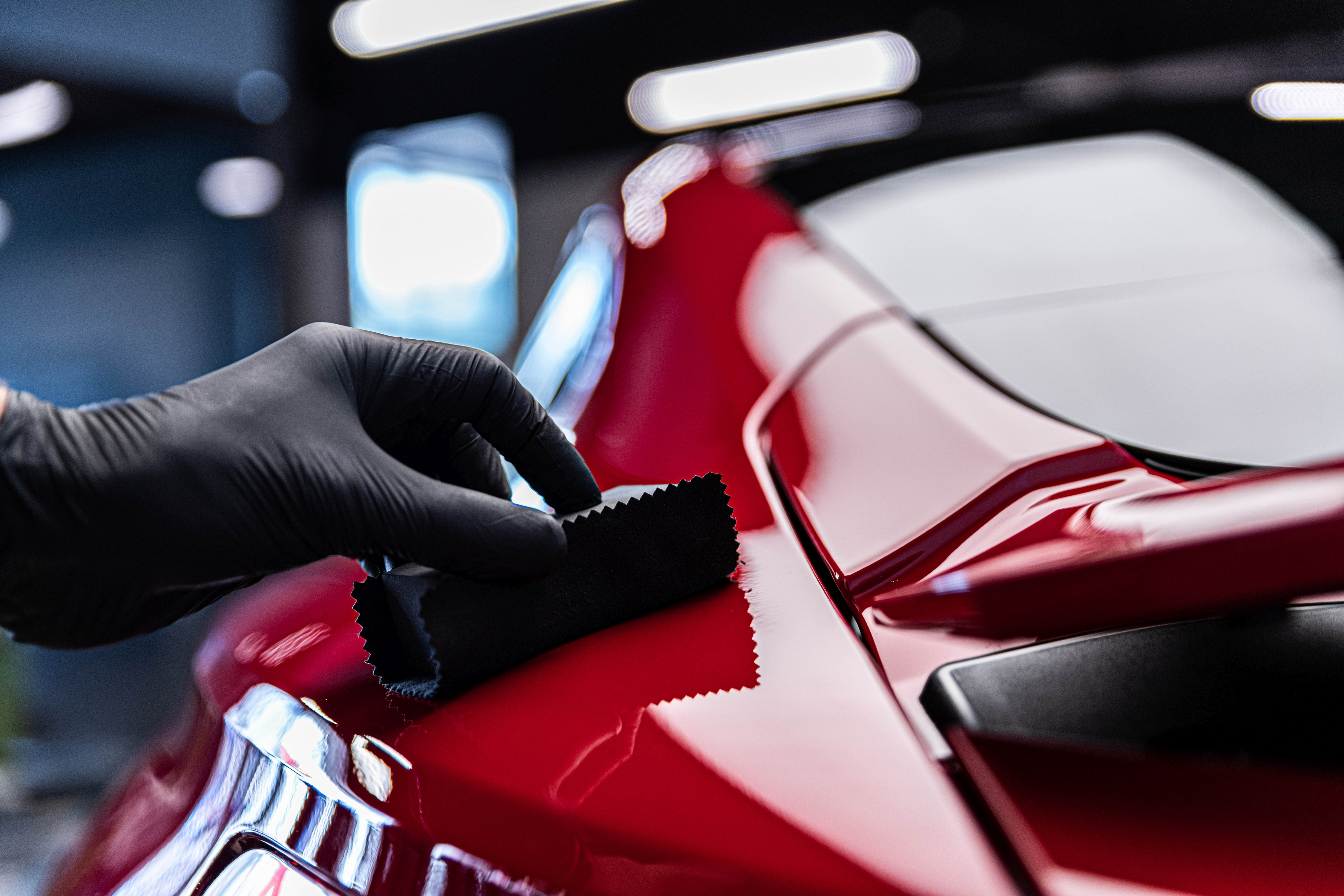Why Ceramic Finishing Is the Ultimate Remedy for a Flawless End Up
Ceramic coating has emerged as a leading remedy for those looking for a perfect coating for their automobiles, thanks to its exceptional longevity and safety features. What elements truly established ceramic finishing apart?
What Is Ceramic Covering?

When applied correctly, ceramic finish creates a hydrophobic surface that pushes back water and dust, making it much easier to keep and clean up. Unlike typical waxes or sealants, which usually offer short-term security, ceramic layers can last for numerous years, depending on the item quality and application method. The process of applying ceramic coating calls for precise prep work, including thorough cleansing and often repaint correction, to make sure ideal bonding and performance.
Ceramic coatings are not restricted to auto surface areas; they can additionally be used on numerous materials, consisting of glass, metal, and plastics, supplying a flexible solution for enhancing security. Generally, ceramic layer stands for a considerable development in surface security technology, incorporating both practical and aesthetic advantages for a large range of applications.
Advantages of Ceramic Layer
While numerous surface area security options exist, the benefits of ceramic covering stand apart due to its distinct residential properties and resilient performance. One of the primary benefits is its remarkable longevity. Ceramic Coating Philadelphia. Unlike typical wax or sealants that call for constant reapplication, ceramic finishes provide a resilient layer that can last for several years, considerably decreasing maintenance efforts
Another significant advantage is enhanced security against ecological pollutants. Ceramic finishes develop a hydrophobic surface area that repels water, dust, and various pollutants, making it simpler to clean. This function not only protects the lorry's look but additionally reduces the danger of deterioration and oxidation, especially in harsh weather conditions.
Moreover, ceramic finishes offer remarkable resistance to UV rays, avoiding fading and degradation of paint in time. This UV defense is crucial for maintaining the aesthetic value of surface areas and lorries exposed to direct sunshine.
Additionally, the glossy finish accomplished with ceramic covering improves the overall visual allure, giving surface areas a showroom-quality sparkle. In general, ceramic layers stand for a considerable improvement in surface area defense innovation, giving enduring benefits that cater to both practical and visual requirements.
How It Works
Recognizing the scientific research behind ceramic finishes discloses just how they give such exceptional security and durability. At its core, a ceramic finishing is a liquid polymer that chemically bonds with the vehicle's factory paint.
The application process involves numerous steps, including surface preparation, which is vital to accomplishing optimal attachment. When applied, the coating undergoes a curing procedure, throughout which it solidifies and creates a semi-permanent bond with the paint surface area. This bond is what identifies ceramic finishes from typical waxes and sealers, giving a longer-lasting protective barrier that can sustain for many years.
Furthermore, the thickness of the finishing can boost its safety qualities, making sure that it can stand up to severe problems. Inevitably, the scientific research of ceramic finishings combines advanced materials with cutting-edge application methods to deliver an unparalleled level of protection and visual enhancement for cars.
Comparison With Conventional Methods
When contrasted to traditional paint protection approaches such as sealants and waxes,The benefits of ceramic coatings become specifically apparent. While waxes provide a short-term luster, commonly lasting a couple of weeks to a number of months, ceramic layers offer a lasting protective layer that can withstand for numerous years. This sturdiness significantly minimizes the regularity of reapplication, making ceramic layers a much more cost-effective service in time.
Furthermore, conventional approaches typically call for substantial prep work and several applications to accomplish an acceptable degree of security. In contrast, ceramic layers bond at a molecular level with the automobile's surface area, producing a durable shield against ecological pollutants like UV rays, acid rain, and roadway salts. This bond improves the automobile's resistance to scrapes and swirl marks, which are widespread with conventional waxes and sealers.
Additionally, the hydrophobic buildings of ceramic finishings drive away water and dust, causing less complicated cleansing and maintenance. In contrast, wax and sealant-treated surface areas can bring in grime, necessitating more regular cleaning - Ceramic Coating Philadelphia. Generally, ceramic layers not only offer this exceptional defense yet likewise deliver a more long-lasting and aesthetically appealing coating, developing them as the recommended selection for critical lorry proprietors
Application and Upkeep Tips

Using a foam applicator, use the coating in tiny sections, adhering to the supplier's guidelines regarding thickness and overlap. Allow sufficient healing time in between coats, normally 24 hours, to guarantee correct bonding. After application, it is essential to avoid direct exposure to water or severe components for at the very least a week to allow the coating to totally heal.
Additionally, utilizing a ceramic upkeep spray can boost the covering's hydrophobic buildings and durability. Regular examinations for any kind of indications of wear will i thought about this aid keep the layer's honesty and protect that pristine finish.
Verdict
Finally, ceramic coating becomes a premium option for achieving a flawless automobile surface. Its exceptional sturdiness, safety qualities, and hydrophobic buildings significantly improve the automobile's look while simplifying upkeep efforts. By developing a robust bond with manufacturing facility paint, ceramic covering efficiently shields versus scrapes, UV rays, and environmental pollutants. With a life expectancy expanding several years, this sophisticated service not just maintains however also elevates the general aesthetic appeal of vehicles, making it a cost-efficient investment for learn this here now automobile fanatics.
